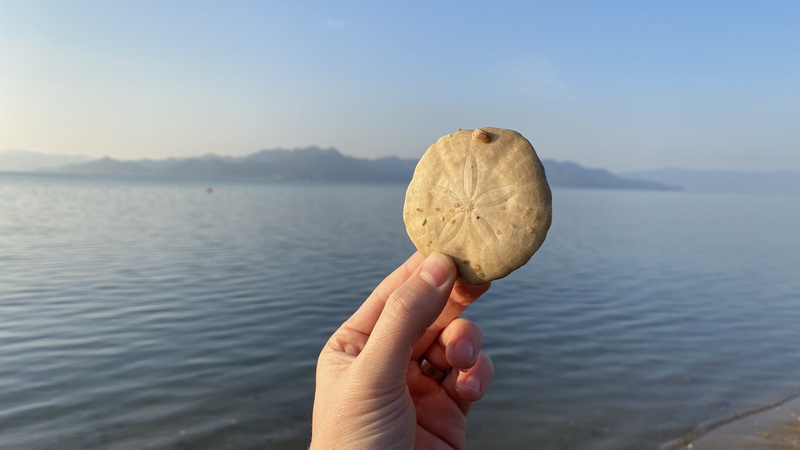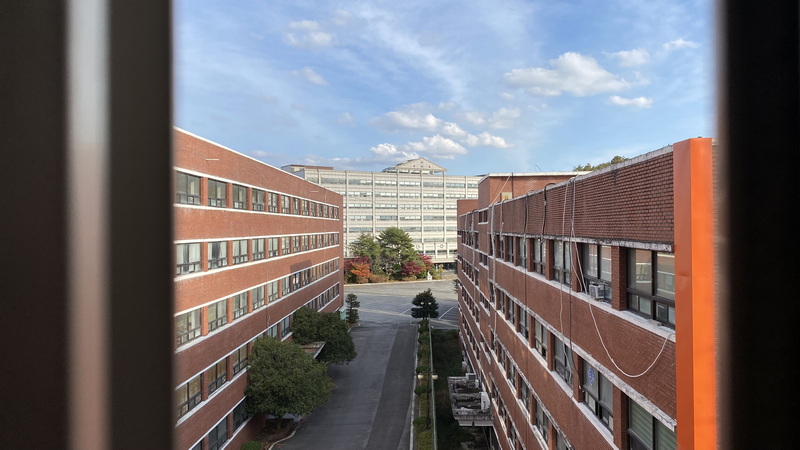Odds and (Dead) Ends: Four Years of Getting Lost
By Isaiah Winters
My involvement with the “Lost” column began this month back in 2018, and as much as I’d like to have a single, significant topic to cover, this fourth anniversary has fallen during a creative slump. As per tradition, whenever this happens, I’m left to cobble together a few half-baked ideas with little rhyme or reason to them. And so, here it is – an underwhelming medley of odds and (dead) ends that have been crowding my workspace these past few months.
Country Roads
A recent passion project of mine has been scouting affordable beachfront properties in Honam. I’m particularly keen on Goheung, but one issue keeps complicating things more than any other: country roads, i.e., unregistered roads that create a maze of Mad Max-style access disputes. Sure, there’s nothing to stop me from buying a certain property, but if the road to it isn’t a public asset, then whoever owns the road has me by the short hairs. In fact, even if a local landowner doesn’t own the road, they can still unilaterally block it, as exemplified below.

One instance of this is a cheap plot of land I found on a bluff overlooking an excellent, obscure beach. The road to it, however, is unregistered and crosses through a patchwork of some eight other properties along the bluff. Years ago, one of the landowners threw up a chain across the road to keep out the trickle of fishermen who’d skulk down to the beach now and then and leave a bunch of trash behind. With the problem apparently persisting, said owner recently erected a second chain a few hundred meters up the road, entirely blocking access to the plot of land for sale – which they don’t even own. It’s not unlike how people in the city toss all kinds of bulky objects onto the margins of public streets to prevent anyone from parking there. It’s a Mad Max mentality.
This mentality has denied that obscure little beach a potential resident who was hell-bent on personally cleaning it up. And so, the area remains strewn with garbage to serve some local’s notion of NIMBY-ism, and I’m left landless with money burning a hole in my pocket. Of course, I could try talking to the chain-crazy owner and working out some sort of beach clean-up quid pro quo, but even if that were to somehow work, what about the seven other property owners who each own a piece of the road? Sadly, this sort of deadlock proves that not all country roads take us home.
Bankrupt U.
Honam has a lot of bankrupt educational institutions that have caught my attention over the years, and recently I discovered the region’s latest: an entire university that’s just gone belly-up. Driven to insolvency by the nepotism, mismanagement, and embezzlement of the tight-knit group of con artists who oversaw it, the university and its founders are a key part of a book I’m slowly writing about some of the region’s most infamous derelicts. Without exposing too much, in this section I’ll share my favorite discovery from among repeat visits to the campus.
My most prized discovery was in a backroom adjacent to a science lab frozen in time with beakers, chemicals, washbasins, and instruments left out as though class had just gone to lunch. Despite the highly photogenic, Breaking Bad aesthetics of the main lab, the backroom had a few books that arrested my attention far more. Chief among them was a yearbook containing details related to my ongoing research into the frauds who ran the institution into the ground. Two full pages at the beginning featured glamor shots of the university’s esteemed chancellor, who also happens to be the spouse of the university’s founder – a power couple if there ever was one.

Said founder is now in Gwangju Prison for embezzling an absurd amount of money from his many educational institutions over the years. Interestingly, he kept a low profile in said yearbook, as I could only find a few uncaptioned images of him on a single page towards the end. In one image, he’s languidly inspecting artwork with his hands behind his back at some sort of staff dinner party. It’s all so understated that if you didn’t know whom to look for, he’d never stand out. Given that I’m still gathering more details on this corrupt power couple for a separate book, I’ll have to leave it at that for now.
Where Vultures Dare
On a recent hike in Jeollabuk-do, I realized that Korea looks exactly like parts of Southern California – particularly Riverside County – if you simply burn it to a crisp. For example, the impressive trail up to Gori-bong, just north of Dongak-san, suffered a forest fire back in 2020 that left one side of the mountain treeless and charred, while the other remained perfectly unscathed. Despite the difficult terrain, the latter side was salvaged thanks to the two helicopters and 200 firefighters that responded to the blaze. No casualties were reported, and an investigation concluded that the fire likely began naturally.
Now just a ridge of exposed boulders and sparse vegetation, the way to Gori-bong has become particularly good for one impressive animal: the vulture. These massive, black scavengers fly down from parts of Mongolia, Siberia, and Manchuria every year to winter in Korea, and as they feed mainly on carrion, wide-open spaces offering good visibility are ideal habitats. I spotted one above this very trail hovering with help from an updraft rising from the mountainside, but I’ve got nothing to show for it because I’d forgotten to bring my long lens camera that day. My most impressive encounter with these massive vultures in Korea was on the highway north of Sunchang, when two flew down surprisingly low above my car. At first, I thought they were just a pair of crows – until I realized their wingspan was about as wide as my highway lane. I guess they were trying to score some roadkill.

There’s one interesting point worth mentioning about what Koreans call these gigantic raptors: doksuri (독수리), which means both “vulture” and “eagle,” according to Naver Dictionary. However, I never hear Koreans refer to these birds as vultures – only eagles. Why this is I don’t know, but a friend of mine suggested it was because “eagle” is far more majestic sounding than “vulture.” Ironically, in California, we hold our state’s majestic vulture in extremely high esteem, but maybe that’s because we gave it a cooler name: the California condor. Perhaps it’s time Korea’s visiting vultures get a cool name of their own. My only request is, please, don’t just slap a lazy prefix on it to make “K-condor.” It’s time to retire this K-prefix cliché – and this overlong article!
The Author
Born and raised in Chino, California, Isaiah Winters is a pixel-stained wretch who loves writing about Gwangju and Honam, warts and all. He particularly likes doing unsolicited appraisals of abandoned Korean properties, a remnant of his time working as an appraiser back home. You can find much of his photography on Instagram @d.p.r.kwangju.







